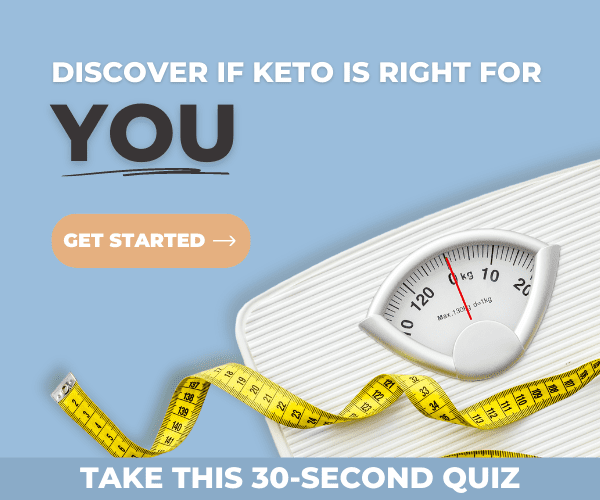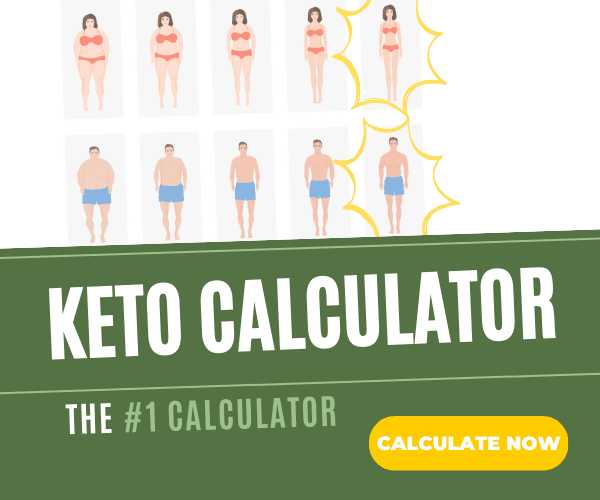
Sweet cinnamon brings bliss and pizzaz to any recipe, from cinnamon buns to mud-cakes, cereal, and lattes — keto, of course! You might have heard cinnamon can help with blood sugar control. Is there any truth to this claim? Could something so irresistibly sweet and comforting also be beneficial for blood sugar instead of detrimental? The short answer is yes! Let’s discuss cinnamon and blood sugar in detail.
What is Cinnamon?
Cinnamon is a popular aromatic spice made from the inner bark of various species of Cinnamomum trees. Worldwide, cinnamon is added to savory and sweet dishes.
Cinnamon isn’t just famous for those tempting rolls or crunchy cereal; it’s been used in traditional medicine and food preservation for thousands of years.
After removal, the inner bark goes through a drying process where it curls up into cinnamon quills or sticks that are further processed into powdered cinnamon.
Cinnamon is high in antioxidants, which can help the body decrease oxidative stress and prevent cell damage. When adults with prediabetes took 500 mg of cinnamon extract every day for 12 weeks, the study showed a 14% reduction in a marker of oxidative stress. Oxidative stress is associated with most chronic diseases, including type 2 diabetes. [1] [2] [3]
What About Blood Sugar?
Cinnamon is a natural and tasty way to help get those blood sugar spikes under control. This sweet spice might help lower blood sugar and improve diabetes by imitating the effects of the digestive hormone insulin. Cinnamon has been shown to increase glucose transport into cells. [4]
Blood sugar spikes and fluctuations can increase levels of inflammation and oxidative stress, which can damage cells and heighten the risk of chronic disease. [5] [6]
Cinnamon might naturally lower blood sugar after meals by blocking digestive enzymes involved in breaking down carbs in the small intestine. [7]
Controlled studies show cinnamon is effective at reducing fasting blood sugar. One review of 543 type 2 diabetics concluded taking cinnamon was linked to an average decrease of over 24 mg/dL (1.33 mmol/L). [8]

Another study showed consuming 1.2 teaspoons of cinnamon with rice pudding led to lower blood sugar elevations and slower stomach emptying compared to eating rice pudding without cinnamon. [9]
The pancreas is the organ that produces insulin. In people with diabetes, the pancreas either can’t produce enough insulin, or the cells don’t respond properly to insulin, leading to high blood sugar levels.
Cinnamon can also increase insulin sensitivity and make insulin more efficient at moving glucose into cells. For example, a small study of seven men taking cinnamon showed increased insulin sensitivity right after consumption, with effects lasting for at least 12 hours. [10]
Studies on the effects on hemoglobin A1c have mixed results, with some reporting significant reductions in hemoglobin A1c, and others reporting no effect. [11] [12]
This popular spice might also lower the risk of diabetes complications, such as heart disease, by improving the risk factors. For example, test tube and animal studies show cinnamon can reduce bad cholesterol and improve blood pressure.
Different Types of Cinnamon
The different varieties of cinnamon sold in the United States are categorized into Ceylon and Cassia. Ceylon (true cinnamon) is the most expensive, and Cassia is the less expensive type found in most food products.
Cassia cinnamon can be derived from a few different species, but Ceylon cinnamon is specifically made from the Cinnamomum verum tree. Ceylon is usually more expensive than Cassia, but studies show Ceylon contains more antioxidants, so it could provide for health benefits. However, most studies demonstrate health benefits with the Cassia variety. [13]
Potential Side Effects

People with diabetes taking insulin or medications should visit their doctor or healthcare practitioner before adding cinnamon to their daily routine.
Ceylon cinnamon doesn’t just have more antioxidants, it’s also lower in a potentially harmful plant substance called coumarin. Too much coumarin might cause side effects, particularly in those with liver problems or disease. Animal studies show coumarin can be toxic to the liver, which raises concerns about liver damage in humans as well, but more research is needed. The amount of coumarin in Cassia cinnamon varies. [14]
The European Food Safety Authority set the tolerable daily consumption of coumarin at 0.045 mg per pound (0.1 mg/kg).
This would be roughly equivalent to half a teaspoon (2.5 grams) of cassia cinnamon daily for a 165-pound individual. It’s easier to consume more than the upper limit of Cassia by taking Cassia cinnamon supplements or eating larger amounts of it in foods.
Ceylon cinnamon has lower amounts of coumarin, and it would be difficult to consume more than the recommended amount of coumarin. Consuming up to 1.2 teaspoons (6 grams) of Ceylon cinnamon daily is considered safe in relation to coumarin content. [15]
There’s no consensus on how much you should consume to reap the benefits and avoid the coumarin risks. Most studies use 1-6 grams daily as a powder added to foods or a supplement.
One study showed blood sugar of people taking 1, 3, or 6 grams daily reduced by the same amount, so taking larger doses might be unnecessary. [16]
Adding Cinnamon to Your Diet
Studies are mounting showing that cinnamon helps with blood sugar control and preventing diabetes complications, in addition to other health benefits.
If you’d like to take cinnamon supplements or add it to your meal, it might be best to use Ceylon, which is more expensive but contains more antioxidants and lower amounts of coumarin. Higher amounts of coumarin have been linked to liver damage in animal studies.
Human studies are needed to reach a solid conclusion about the effects of coumarin in humans and how much is safe for consumption.
Generally speaking, you shouldn’t exceed 0.5-1 grams of Cassia daily, but it’s considered safe to take up to 1.2 teaspoons of Ceylon cinnamon (6 grams) daily.
It’s always best to visit your doctor or healthcare practitioner before taking any new supplements or making any significant dietary changes.
References
Shan, B., Cai, Y. Z., Sun, M., & Corke, H. (2005). Antioxidant capacity of 26 spice extracts and characterization of their phenolic constituents. J Agric Food Chem, 53(20), 7749-59. DOI: 10.1021/jf051513y
Roussel, A-M., Hininger, I., Benaraba, R., Ziegenfuss, T. N., & Anderson, R. A. (2009). Antioxidant effects of a cinnamon extract in people with impaired fasting glucose that are overweight or obese. Journal of the American College of Nutrition, 28(1), 16-21. DOI: 10.1080/07315724.2009.10719756
Khansari, N., Shakiba, Y., & Mahmoudi, M. (2009). Chronic inflammation and oxidative stress as a major cause of age-related diseases and cancer. Recent Pat Inflamm Allergy Drug Discov, 3(1), 73-80. DOI: 10.2174/187221309787158371
Jarvill-Taylor, K. J., Anderson, R. A., & Graves, D. J. (2001). A hydroxychalcone derived from cinnamon functions as a mimetic for insulin in 3T3-L1 adipocytes. Journal of the American College of Nutrition, 20(4), 327-36. DOI: 10.1080/07315724.2001.10719053
Monnier, L., Mas, E., Ginet, C., Michel, F., Villon, L., Cristol, J-P., & Colette, C. (2006). Activation of oxidative stress by acute glucose fluctuations compared with sustained chronic hyperglycemia in patients with type 2 diabetes. 295(14), 1681-7. DOI: 10.1001/jama.295.14.1681
Esposito, K., Nappo, F., Marfella, R., Giugliano, G., Giugliano, F., Ciotola, M…Giugliano, D. (2002). Inflammatory cytokine concentrations are acutely increased by hyperglycemia in humans: Role of oxidative stress. Circulation, 106(16), 2067-72. DOI: 10.1161/01.cir.0000034509.14906.ae
Shihabudeen, H. M. S., Priscilla, D. H., & Thirumurugan, K. (2011). Cinnamon extract inhibits a-glucosidase activity and dampens postprandial glucose excursion in diabetic rats. Nutr Metab (Lond), 8(1), 46. DOI: 10.1186/1743-7075-8-46
Allen, R. W., Schwartzman, E., Baker, W. L., Coleman, C. I., & Phung, O. J. (2013). Cinnamon use in Type 2 diabetes: An updated systematic review and meta-analysis. Ann Fam Med, 11(5), 452-459. DOI: 10.1370/afm.1517
Hlebowicz, J., Darwiche, G., Bjorgell, O., & Almer, L-O. (2007). Effect of cinnamon on postprandial blood glucose, gastric emptying, and satiety in healthy subjects. American Journal of Clinical Nutrition, 85(6), 1552-6. DOI: 10.1093/ajcn/85.6.1552
Solomon, T. P. J., & Blannin, A. K. (2007). Effects of short-term cinnamon ingestion on in vivo glucose tolerance. Diabetes Obes Metab, 9(6), 895-901. DOI: 10.1111/j.1463-1326.2006.00694.x
Akilen, R., Tsiami, A., Devendra, D., & Robinson, N. (2010). Glycated haemoglobin and blood pressure-lowering effect of cinnamon in multi-ethnic Type 2 diabetic patients in the UK: A randomized, placebo-controlled, double-blind clinical trial. Diabetes Medicine, 27(10), 1159-67. DOI: 10.1111/j.1464-5491.2010.03079.x
Mang, B., Wolters, M., Schmitt, B., Lichtinghagen, R., Stichtenoth, D. O., & Hahn, A. (2006). Effects of a cinnamon extract on plasma glucose, HbA, and serum lipids in diabetes mellitus type 2. European Journal of Clinical Investigation, 36(5), 340-4. DOI: 10.1111/j.1365-2362.2006.01629.x
Ranasinghe, P., Pigera, S., Premakumara, G. A. S., Galappaththy, P., Constantine, G. R., & Katulanda, P. (2013). Medicinal properties of ‘true’ cinnamon (Cinnamomum zeylanicum): A systematic review. BMC Complement Altern Med, DOI: 10.1186/1472-6882-13-275
European Food Safety Authority (2008). Coumarin in flavourings and other food ingredients with flavouring properties: Scientific opinion of the panel on food additives, flavourings, processing aids, and materials in contact with food (AFC). EFSA Journal, 793, 1-15. onlinelibrary.wiley.com/doi/10.2903/j.efsa.2008.793/epdf
Wang, Y-H., Avula, B., Nanayakkara, N. P. D., Zhao, J., & Khan, I. A. (2013). Cassia cinnamon as a source of coumarin in cinnamon-flavored food and food supplements in the United States. J Agric Food Chem, 61(18), 4470-6. DOI: 10.1021/jf4005862
Khan, A., Safdar, M., Khan, M. M. A., Khattak, K. N., & Anderson, R. A. (2003). Cinnamon improves glucose and lipids of people with Type 2 diabetes. Diabetes Care, 26(12), 3215-3218. https://doi.org/10.2337/diacare.26.12.3215










